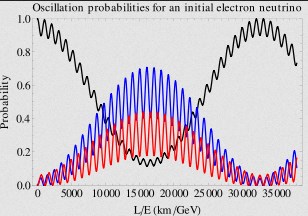China’s Underwater “Ghost Particle” Detector
In a groundbreaking scientific endeavor, China is constructing the world’s largest “ghost particle” detector, the Tropical Deep-sea Neutrino Telescope (TRIDENT), also known as “Hai ling” or “Ocean Bell” in Chinese. Situated 11,500 feet (3,500 meters) beneath the surface of the Western Pacific Ocean, TRIDENT will revolutionize our understanding of elusive particles known as neutrinos.
Neutrinos: Elusive Ghost Particles
- Abundant and Elusive: Neutrinos are among the most abundant subatomic particles in the universe, second only to photons. However, their nonexistent electrical charge and near-zero mass make them extremely elusive, as they interact minimally with other types of matter.
- Scientific Significance: Slowing down neutrinos allows scientists to trace their origins billions of light-years away, shedding light on cataclysmic stellar events and galactic phenomena.
TRIDENT’s Role
- Earth’s Shield: TRIDENT will be anchored on the seabed of the Western Pacific Ocean near the equator. It will use Earth as a shield to detect neutrinos penetrating from the opposite side of the planet, enabling all-sky observation without blind spots.
- Detection Method: Neutrinos occasionally interact with water molecules, creating particle byproducts called muons that emit flashes of light. TRIDENT will consist of over 24,000 optical sensors arranged in a Penrose tiling pattern on 1,211 strings, each 2,300 feet (700 meters) long. When fully operational, it will scan for neutrinos across 1.7 cubic miles (7.5 cubic kilometers) of water.
- Sensitivity: TRIDENT will be significantly more sensitive than existing detectors like IceCube in Antarctica. It will increase the chances of detecting neutrinos, including rare ones produced when cosmic rays interact with Earth’s atmosphere.
Timeline
- Pilot Project: A pilot project is set to commence in 2026.
- Full Operation: The complete TRIDENT detector is expected to be operational by 2030.
Month: Current Affairs - October, 2023
Category: Science & Technology Current Affairs







